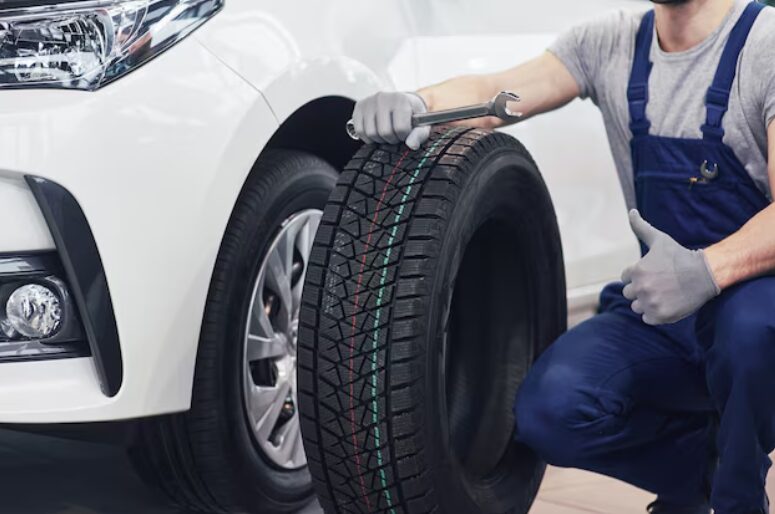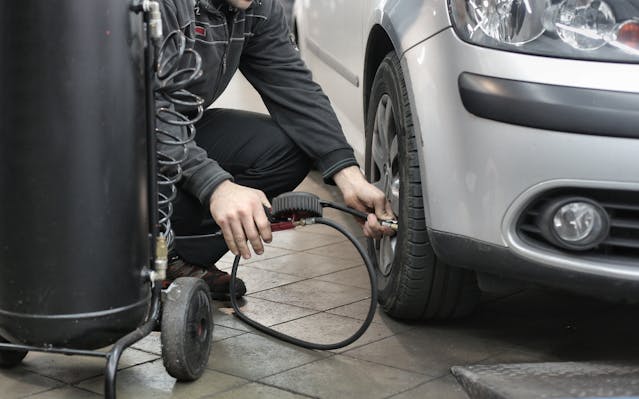Tires represent the sole connection between a machine and the ground. Their state and composition can determine a vehicle’s performance, safety, and durability. If you own a motorbike or are driving a second-hand car, don’t forget to buy the right tires and look after them properly. Time and again fitting your bike or car with tires pays off richly.

In this article, we shall take a closer look at how the relationship between tires and the life of our vehicles works out in practice by examining both the quality of our tires and what we do to maintain them. The particular focus will be on motorcycles and cars.
Why Tires Are Important for Vehicle Longevity
Tires are more than mere rubber wrapped around a wheel; they are multi-component assemblies designed to cope with difficult loads and tortures. Car life can depend on the tire for many reasons:
1. Safety and Performance
Tires direct the handling and braking of a vehicle, as well as impacting overall safety. Poor tire quality or worn treads can mean longer stopping distances and less grip overall, resulting in accidents or quicker wear for other car components.
2. Fuel Efficiency
Properly inflated and high-quality tires cause a drop in rolling resistance for the motor to function more efficiently. A motorcycle or a used car means fewer trips to gas stations as well as less load on your engine.
3. Reduced Wear on Other Parts
Good tire condition minimizes vibrations and makes for smoother This protects important components such as suspension systems, axles, and brakes for longer life spans-saving money in costly repairs.
Tire Quality Matters in Vehicle Longevity
Tire quality matters. Choosing quality tires for your vehicle always matters for its longevity. Here’s what can be decided by the quality of the tire:
1. Durability and Material
Premium tires are made from top-grade materials that stand up and have true strength. For instance, motorcycles require tire sidewalls that are durable enough to take the dynamic stresses of high-speed riding in their stride, while a used car benefits from tires designed to support increased loads.
2. Suitability for Driving Conditions
The right tires for specific conditions—be it wet, snowy, or dry terrain—will offer more grip and thus lessen the load on the vehicle. For example, if a used car were fitted with all-season tires it could under no circumstances skid across frozen roads. This would help the engine and brakes avoid hitting peak stress.
Tire Maintenance: A Key to Longevity
Tires need to be properly maintained. That’s the only way you can count on them for long life. If you neglect tire care, there are such consequences as quick wear and tear, bigger gas bills, or trouble with safety.

1. Regular Inspections
- Check Tread Depth: Worn treads mean less grip and a greater chance of accidents.
- Inspect for Damage: Cuts, punctures, and bulges can compromise tire integrity.
- Monitor Tire Age: Tires degrade over time, even with minimal use. Replace them every 5-6 years, as recommended.
2. Wheel Alignment and Balancing
Misaligned wheels lead to uneven tire wear and put strain on steering and suspension components. The wheels should be balanced so that the tire remains uniform in weight. This reduces unnecessary strain.
3. Rotation
Tires need to be rotated regularly if wear is to be kept even. On a motorcycle, the rear tire will often wear faster than the front tire and on a car, the front tires will typically wear more because of turning loads.
The Motorcycle Perspective
Unique demands are placed on their tires due to motorcycles weighing lighter and being more agile. And their longevity depends on the quality of tires and proper handling.
1. High-Speed Wear
High-speed cornering and braking mean motorcycle tires often wear faster. Good riders take frequent checks and replace their tires as they approach the wear limit.
2. Specialized Tires for Longevity
For example, adventure bikes benefit from dual-sport tires that perform brilliantly on both highways and off-road trails. This greatly reduces the frequency of tire changes.
The Used Car Perspective
The Veil of Used Cars Very often a used car’s tires are a mirror of how well its previous owner looked after it. What about the impact those tires have on the longevity of a used car:
1. Tires as an Indicator of Vehicle Health
When purchasing a used car, the main issues to look for in its tires include:
- Uneven Wear: This points out misalignment and can mean trouble with the car’s suspension.
- Low Tread Depth: Bad maintenance or heavy use.
- Mismatched Tires: A sign that the car might not have been cared for very well.

2. Choosing the Right Tires
Someone looking for budget-friendly reliable vehicles may want to consider used cars. How they choose to do that is in a large part influenced by regulations on used car emissions. It’s not surprising then, why many consumers think used cars are not high-end items, as there’s always talk that they might destroy the environment with pollution. Buying a used car can make someone feel a little uneasy, but if properly cared for then it will last for two years without problem.
3. The Cost Factor
Though they may not seem like expenses, new tires on used cars ultimately stretch out the car’s lifespan. With good tires, there’s less wear and tear on parts such as shock absorbers; better fuel efficiency adds up to save you money in the long run.
Common Mistakes That Shorten Tire Life
Avoiding these common mistakes can make sure your tires last longer and keep contributing to vehicle longevity:
- Ignoring Pressure Checks: Driving with under or over-inflated tires will accelerate wear and increase the chances of blowouts.
- Skipping Rotations: Uneven wear reduces tire life and vehicle handling will be affected.
- Overloading: Carrying more load than the tire rating allows brings faster wear, and possible failure.
- Driving on Poor Roads: Surprisingly, consistently driving on rocky terrain with the wrong tires will wear both more than a perfectly good customer and his vehicle.
Final Thoughts
Tires are a critical aspect of any vehicle’s life expectancy, especially in used cars where the maintenance factor is so critical. With top-grade tires together with maintenance over a long period, it is possible to salvage a seemingly aging vehicle. High-quality tires, used in tandem with good maintenance practice, can greatly improve vehicle performance as well as longevity. For motorcycle riders, choosing a pair of hard-tire riding tires not only makes their journey safer but also saves money on replacements at regular intervals.

Sanela Isakov
Sanela Isakov is an avid motorcycle enthusiast with over a decade of experience in the two-wheeled world. She combines a passion for long rides with a deep understanding of the importance of quality tires. This site is an avenue for Sanela to share expertise, road adventures, and insights into the world of motorcycles and their rubber companions.


